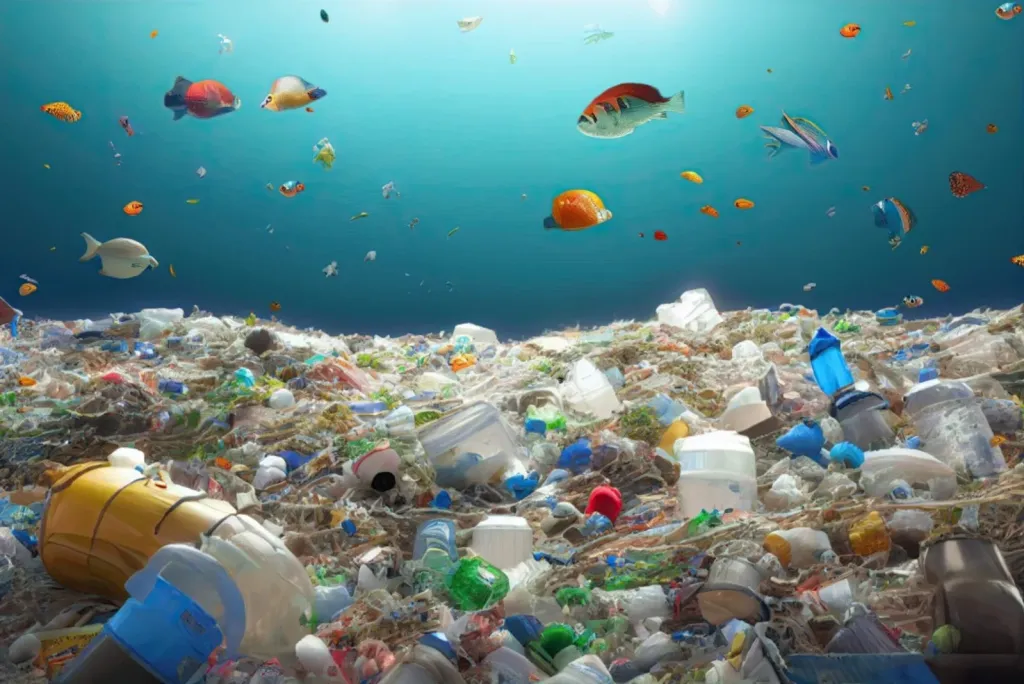Recent research has revealed how plastic affects the environment, health and people’s well-being in a much more complex and harmful way than previously thought. The study uses Planetary Boundaries to explore the full life cycle of plastic, showing its impact on global environmental issues including climate change, biodiversity loss, freshwater and land use.
“The entire life cycle of plastic needs to be taken into account, starting from fossil fuel extraction and primary production of polymeric plastic,” said lead author Patricia Villarrubia-Gómez, a PhD student at Stockholm University’s Stockholm Center for Sustainability.
Global plastic overload
Currently, more than 500 million tonnes of plastic are produced each year, but only 9% is recycled. Plastic is ubiquitous and pollutes ecosystems from the top of Mount Everest to the depths of the Mariana Trench. The research team’s review shows how plastic pollution affects the world’s essential systems and contributes to almost all pressing global environmental problems.
Plastics are complex synthetic materials often combined with thousands of chemicals. Their impact extends across the entire life cycle, from the extraction of raw materials to production, use and release into the environment.
“Plastics are seen as inert products that can be ‘easily cleaned’ when they become waste, preserving our favorite foods or making our lives easier. But this is far from reality,” Villarrubia-Gómez said. “Plastics are a combination of thousands of chemicals. Many, such as endocrine disruptors and chemicals, are toxic and harmful to ecosystems and human health.”
Interrelated effects of plastics
To date, most research and policy work has focused on specific aspects of plastic pollution, often treating it as a waste management problem. But the study highlights that the effects of plastic are interconnected and are destabilizing the Earth system in ways previously overlooked.
“The impact of plastic on the Earth system is complex and interconnected,” said co-author Sarah Cornell, a global sustainability expert at the Stockholm Sustainability Centre. “This study clearly shows how plastic destabilizes the system.”
The impact of plastic on the Earth
To address these effects more effectively, researchers propose a pathway approach. This framework includes indicators for three main stages of plastic’s life cycle: extraction and production, emissions to the environment and systemic impact on the Earth.
Rather than seeking a single quantitative threshold for plastic pollution within planetary boundaries, they propose a set of control variables that could better capture the multifaceted nature of plastic pollution.
“We emphasize that impacts at every stage of the plastic life cycle must be considered,” Villarrubia-Gómez said. “We introduce a set of control variables that allow us to better understand and control plastic pollution.”
Data transparency issues
The research team examined publicly available data on plastic production, highlighting significant problems in standardization and reporting. At least 506 million tons of plastic were produced in the world in 2022 alone.
Approximately 11,090 million tons have been produced since the 1950s. However, inconsistent data reporting, lack of methodological detail, and lack of metadata make reliable estimates difficult.
This data gap limits both research and policy responses, the team noted. Despite existing restrictions, existing evidence shows how damaging plastic is to the environment on a planetary scale. Plastic pollution affects ecosystems directly through physical contamination and indirectly by changing biophysical processes on Earth.
Solutions for the health of the planet
The consequences of plastic pollution for people around the world are becoming increasingly serious as the planet’s boundaries are increasingly violated. Understanding how plastic interacts within Planetary Boundaries can contribute to more sustainable strategies for solving pressing environmental problems.
Study co-author Bethany Carney Almroth, an expert on the impact of plastic on the environment at the University of Gothenburg, said plastic is now found in the most remote parts of the planet and most closely in the human body.
“We know that plastic is a complex material that enters the environment throughout its life cycle, damaging many systems,” he said.
“The solutions we seek to develop must address this complexity, addressing the full spectrum of security and resilience to protect people and the planet.”
Review of plastic pollution policy
In conjunction with the approach of international negotiations on plastic, researchers call on experts and policymakers not to consider plastic pollution solely as a waste problem. They hope that by focusing on the entire life cycle and material flows, policymakers can address the impact of plastic pollution on the world’s essential systems.
This shift in perspective could enable more accurate monitoring of the impacts of plastic pollution on climate, biodiversity and resources, enabling timely and targeted interventions. The study was published in the journal One World,
Source: Port Altele
